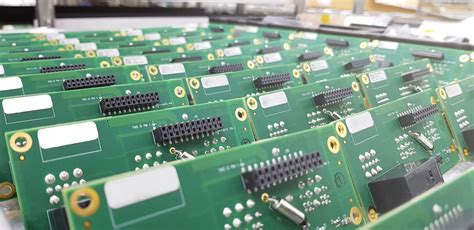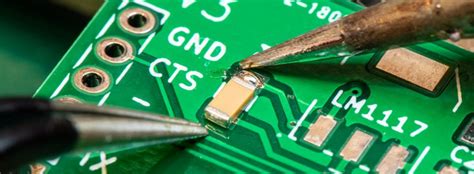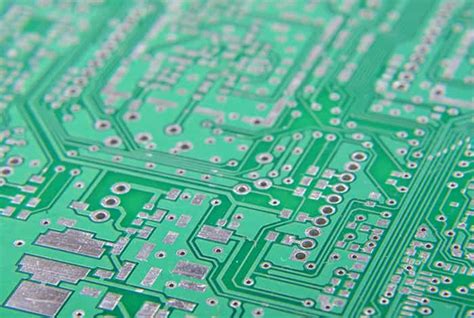2 layer pcb price
Factors Influencing 2 Layer PCB Price
When considering the cost of a 2-layer printed circuit board (PCB), several factors come into play, each contributing to the overall price. Understanding these factors is crucial for businesses and individuals looking to optimize their budget while ensuring the quality and functionality of their electronic products.
One of the primary determinants of the price is the size of the PCB.
Larger boards require more material and take longer to produce, which naturally increases the cost. Conversely, smaller boards are less expensive due to reduced material usage and quicker production times. However, the complexity of the design can also impact the price significantly.
In addition to size, the intricacy of the PCB design is another critical factor.
A simple design with fewer components and straightforward routing will generally cost less than a complex design that requires precise engineering and advanced technology. Complex designs often necessitate additional layers, even in a 2-layer PCB, to accommodate intricate circuitry, which can drive up the cost. Moreover, the number of vias, or holes that allow connections between layers, can also affect the price. More vias mean more drilling and plating, which increases manufacturing time and cost.
Material selection is another essential aspect influencing the price of a 2-layer PCB.
The type of substrate material used can vary widely in cost. For instance, standard FR-4 material is commonly used for its balance of performance and affordability. However, if a project requires materials with higher thermal or electrical properties, such as polyimide or Rogers materials, the cost will rise accordingly. These specialized materials are often necessary for high-frequency applications or environments with extreme temperatures, justifying their higher price point.
Furthermore, the production volume plays a significant role in determining the cost per unit of a 2-layer PCB.
Generally, larger production runs benefit from economies of scale, reducing the cost per board. Manufacturers can spread setup costs over a larger number of units, making each board less expensive. On the other hand, small production runs or prototypes tend to be more costly per unit due to the fixed costs associated with setting up the production line.
Another factor to consider is the turnaround time required for the PCB production.
Expedited manufacturing services are available for those who need their PCBs quickly, but this convenience comes at a premium. Faster production times require manufacturers to prioritize the order, often leading to increased labor costs and potential overtime charges. Therefore, planning ahead and allowing for standard production times can result in significant cost savings.
Quality assurance and testing are also integral to the pricing structure of 2-layer PCBs.
Ensuring that each board meets the necessary standards and functions correctly is vital, especially in industries where reliability is paramount. Comprehensive testing procedures, such as electrical testing and inspection, add to the overall cost but are essential for maintaining product quality and customer satisfaction.
In conclusion, the price of a 2-layer PCB is influenced by a multitude of factors, including size, design complexity, material choice, production volume, turnaround time, and quality assurance measures. By carefully considering each of these elements, businesses and individuals can make informed decisions that balance cost with the necessary performance and reliability of their electronic products. Understanding these factors not only aids in budgeting but also ensures that the final product meets the desired specifications and quality standards.

Comparing 2 Layer PCB Prices Across Manufacturers
When considering the production of a 2-layer printed circuit board (PCB), one of the most critical factors to evaluate is the cost. The price of a 2-layer PCB can vary significantly across different manufacturers, influenced by a multitude of factors including material quality, production volume, and additional services offered. Understanding these variables is essential for making an informed decision that balances cost with quality and functionality.
To begin with, the base material used in the PCB can greatly affect the price.
Most manufacturers offer a range of materials, from standard FR-4 to more specialized substrates that provide enhanced thermal or electrical properties. While FR-4 is the most common and cost-effective option, opting for a higher-grade material can increase the price but may be necessary for specific applications that demand superior performance. Therefore, it is crucial to assess the requirements of your project to determine whether the additional cost is justified.
Moreover, the production volume plays a significant role in pricing.
Manufacturers often offer discounts for bulk orders, making it more economical to produce larger quantities of PCBs. This is due to the economies of scale, where the cost per unit decreases as the volume increases. However, for smaller projects or prototypes, the per-unit cost may be higher, as the setup and production costs are spread over fewer units. Consequently, it is advisable to carefully plan the production volume to optimize costs.
In addition to material and volume, the complexity of the PCB design can also impact the price.
A 2-layer PCB with a simple design will generally be less expensive than one with intricate patterns and numerous vias. The complexity can increase the time and resources required for production, thereby raising the cost. It is beneficial to work closely with the manufacturer to streamline the design, potentially reducing unnecessary complexity and, in turn, the overall cost.
Furthermore, manufacturers may offer additional services such as design consultation, testing, and assembly, which can influence the final price.
While these services can add to the cost, they often provide value by ensuring the PCB meets the required specifications and functions correctly. For instance, testing services can identify potential issues before mass production, saving time and money in the long run. Therefore, it is important to weigh the benefits of these services against their costs.
Another factor to consider is the geographical location of the manufacturer.
PCBs produced in regions with lower labor and production costs may be cheaper, but this can sometimes come at the expense of quality or lead to longer shipping times. Conversely, local manufacturers might offer faster turnaround times and better quality assurance, albeit at a higher price. Balancing these considerations is key to selecting a manufacturer that aligns with your priorities.
In conclusion, comparing 2-layer PCB prices across manufacturers involves a careful evaluation of several factors, including material choice, production volume, design complexity, additional services, and geographical location. By understanding how these elements influence pricing, you can make a more informed decision that meets both your budgetary constraints and technical requirements. Ultimately, the goal is to achieve a cost-effective solution without compromising on quality or performance.

Cost-Effective Strategies for Reducing 2 Layer PCB Price
In the realm of electronics manufacturing, the cost of printed circuit boards (PCBs) is a significant factor that can influence the overall budget of a project. Among the various types of PCBs, the two-layer PCB is a popular choice due to its balance of complexity and cost. However, even with its relatively straightforward design, there are strategies that can be employed to further reduce the price of two-layer PCBs, making them even more cost-effective for manufacturers and designers alike.
To begin with, one of the most effective strategies for reducing the cost of two-layer PCBs is optimizing the design layout.
By carefully planning the placement of components and the routing of traces, designers can minimize the amount of material used, which directly impacts the cost. For instance, reducing the board size by efficiently utilizing space can lead to significant savings. Additionally, minimizing the number of vias and layers can also contribute to cost reduction, as these elements often require additional processing steps and materials.
Moreover, selecting the right materials is crucial in managing costs.
While high-performance materials may be necessary for certain applications, many projects can utilize more standard materials without compromising functionality. By choosing materials that meet the necessary specifications without exceeding them, manufacturers can avoid unnecessary expenses. Furthermore, sourcing materials from reliable suppliers who offer competitive pricing can also help in keeping costs down.
Another important consideration is the choice of manufacturing processes.
Engaging with manufacturers who offer advanced technologies and efficient production methods can lead to cost savings. For example, automated assembly processes can reduce labor costs and improve production speed, ultimately lowering the overall price of the PCB. Additionally, manufacturers who offer economies of scale can provide discounts for larger orders, making it more economical to produce PCBs in bulk.
Furthermore, it is beneficial to engage in early collaboration with PCB manufacturers during the design phase.
By involving manufacturers early on, designers can gain insights into cost-effective design practices and potential manufacturing constraints. This collaboration can lead to design adjustments that reduce costs without sacrificing quality or performance. Manufacturers can also provide valuable feedback on design choices that may impact production efficiency and cost.
In addition to these strategies, leveraging design software tools can also play a significant role in cost reduction.
Modern PCB design software offers features that assist in optimizing layouts, simulating performance, and identifying potential issues before production begins. By utilizing these tools, designers can create more efficient designs that require fewer revisions, thereby reducing the time and cost associated with prototyping and testing.
Finally, it is essential to consider the long-term implications of design choices.
While initial cost savings are important, ensuring the reliability and durability of the PCB is equally crucial. Investing in quality assurance measures and thorough testing can prevent costly failures and rework in the future. By balancing cost reduction strategies with quality considerations, manufacturers can achieve a cost-effective solution that meets both budgetary and performance requirements.
In conclusion, reducing the price of two-layer PCBs involves a multifaceted approach that encompasses design optimization, material selection, manufacturing processes, and early collaboration with manufacturers. By implementing these strategies, manufacturers and designers can achieve significant cost savings while maintaining the quality and functionality of their PCBs. As the demand for efficient and economical electronic solutions continues to grow, these cost-effective strategies will remain vital in the competitive landscape of PCB manufacturing.

Understanding the Impact of Material Choice on 2 Layer PCB Price
When considering the cost of a 2-layer printed circuit board (PCB), one of the most significant factors influencing the price is the choice of materials. The materials used in the construction of a PCB not only affect its performance and durability but also play a crucial role in determining the overall cost. Understanding how different materials impact the price can help manufacturers and designers make informed decisions that balance cost with functionality.
To begin with, the substrate material forms the foundation of any PCB.
The most commonly used substrate is FR-4, a composite material made of woven fiberglass cloth with an epoxy resin binder that is flame resistant. FR-4 is favored for its excellent mechanical strength, electrical insulation properties, and cost-effectiveness. However, opting for high-frequency laminates or materials with enhanced thermal properties can significantly increase the cost. These specialized materials are often required for applications involving high-speed signals or extreme environmental conditions, where standard FR-4 would not suffice.
Moreover, the choice of copper thickness is another critical factor affecting the price of a 2-layer PCB.
Standard copper thickness is typically 1 oz per square foot, but thicker copper layers, such as 2 oz or 3 oz, are sometimes necessary for boards that need to handle higher current loads. While thicker copper can improve the board’s performance by reducing resistance and improving heat dissipation, it also increases the material cost and the complexity of the manufacturing process, thereby raising the overall price.
In addition to substrate and copper thickness, the type of solder mask and surface finish applied to the PCB can also influence its cost.
The solder mask, which protects the copper traces from oxidation and prevents solder bridges, is usually made from epoxy liquid or dry film. While standard green solder mask is the most economical option, other colors or types, such as matte finishes or UV-sensitive masks, can add to the expense. Similarly, the surface finish, which ensures good solderability and protects exposed copper, varies in cost depending on the type chosen. Options like HASL (Hot Air Solder Leveling) are more affordable, whereas ENIG (Electroless Nickel Immersion Gold) or OSP (Organic Solderability Preservative) can be more costly due to their superior performance and reliability.
Furthermore, the complexity of the PCB design itself can impact material costs.
A design with intricate patterns, tight tolerances, or numerous vias may require more precise manufacturing techniques and higher-quality materials, thus increasing the price. Additionally, the size of the production run can affect material costs. Larger volumes often benefit from economies of scale, reducing the per-unit cost of materials, whereas smaller runs may not enjoy such discounts.
In conclusion, the choice of materials is a pivotal factor in determining the price of a 2-layer PCB. By carefully selecting materials that meet the specific requirements of their application, while also considering cost implications, manufacturers can optimize both performance and budget. As the electronics industry continues to evolve, staying informed about material advancements and their cost impacts will be essential for those involved in PCB design and production.






